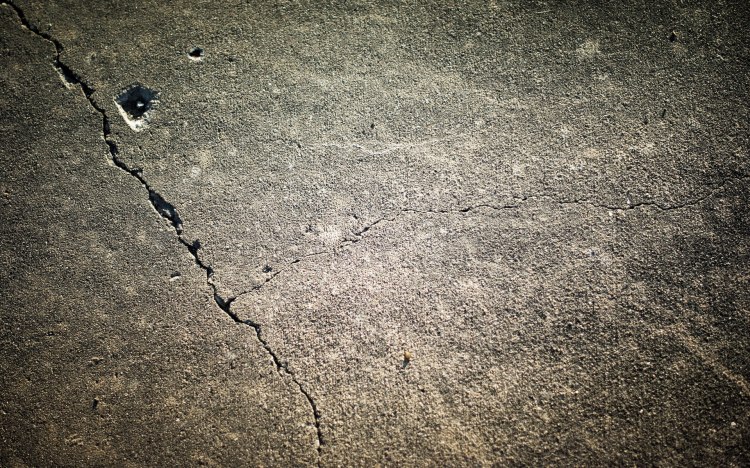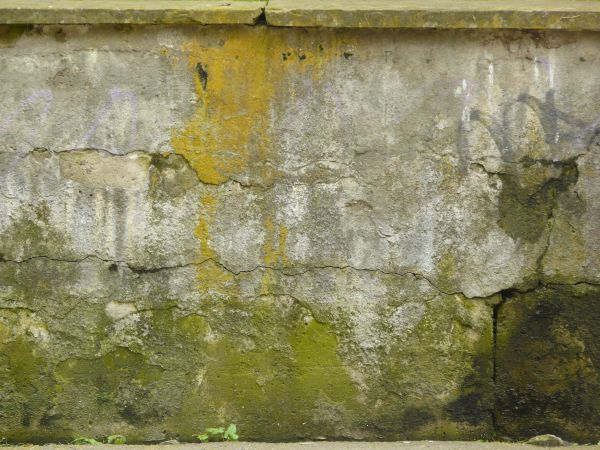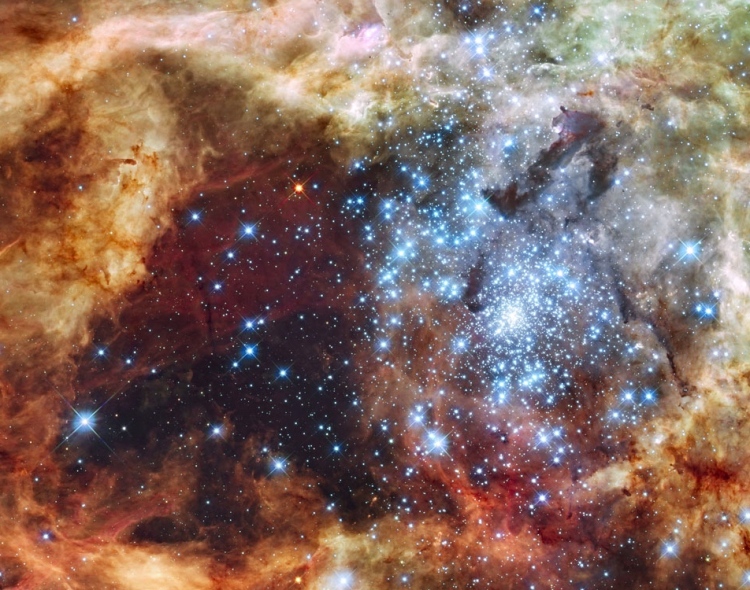Hi Moshe,
You’ve asked me to briefly re-state my position on mysticism, so I’ll begin with a tale.
Long ago (aren’t these always the first words of a tale?), because a conversation I had with a girl seemed to go well, I asked her for a date and she agreed.
I turned up in a 3-piece suit with tie on a very hot and humid afternoon (in Australia we call such weather ‘stinking hot’). I waited and waited but she never appeared. I wondered, as one might, ‘Why not?’
I remembered that during our conversation I had said, and with some feeling, that I thought concrete is beautiful. Could this have been the reason for her ‘no-show’? That concrete is beautiful was something I had been cogitating.
Why is concrete beautiful? I recommend the study of it – the richness and subtlety of its textures, of its colours, its ‘flaws’, the processes and effects of its ageing.
At a deeper level, concrete and I are the same matter, the same objective reality, but organised differently (I just remembered that when I worked in the Tate as a gallery attendant, my supervisor, in philosophical conversation one day in the staff-room said sagely ‘Grass never grows on a busy footpath [my hairline had substantially receded] – or through concrete’. How you interpret that is up to you.).
When I die, the matter of which I am comprised will pass back into the same world into which all concrete, too, will similarly decay.
If all humans are beautiful in their mere existence (as I think), then why not concrete?
I particularly think concrete is beautiful because I perceive my profound relationship to it. At the most fundamental level (isn’t this what philosophers seek?), our beauty is its beauty.
Then there are the considerations of the relations of concrete and humans as parts to the material whole. These relations and the manifestation of them are what is most beautiful.
What links Plotinus to Chernyshevsky is that for both, beauty is reality and life. Where Plotinus referred to those of ‘another’ world, Chernshevsky referred to those in this.
The philosophical current developed in mysticism (particularly German) and then incorporated into dialectical materialism addresses all this.
But where both mysticism and materialism equally address the whole and its parts and processes, the centrality of emotion (though rationalised) and, particularly, intuition to mysticism give much greater scope to our ‘feelings’ and brain processes other than those of linguistic reason – a crucial point yet to be absorbed into dialectical materialism, which is still in the shadow of the patriarchal model, the Man of Reason.
Marx stood the mystical understanding of ‘reality’ and ‘life’ on its material feet. It is up to us to further develop dialectical materialism. While not a science, it is the philosophy of the future.
I look forward to your response,
All the best,
Phil




Nice 🙂
LikeLike
Dear Phil,
I wonder not of your supervisor’s “desperation”, which forced him to acknowledge that you are way too smart for the job, without forgetting to add a bit of maliciousness aimed at your rather hairless appearance.
Your understanding of mysticism is peculiar, leaving one to wonder if it has been shaped by the development of your understanding of life within the frames of materialism’s fairly straight angles, or it emerged as natural part of your thought life. The question remains though, as which may have been the driving “force”, your learned information reasoning, or rather your subjective, as you say, intuitive evaluation.
If I would venture into some rather personal, thought analytical fields, I would perceive an interesting contradiction between your perception of reality, and the subliminal message forwarded by your choice of concrete as a cogitative archetype. Concrete, as opposed to naturally occurring rocks, is a product of human endevour, actually nothing more than the transforming of limestone back into itself, with mankind as the “constructive” agent in between. It reveals the pervading western thought of transforming, and thus controlling nature by intersecting it, rather than tangentially using it as it comes… It therefore understands anything unseen by intersecting it with rationally related, seen frames of matter. Therefore your acceptance of mist, comes from your understanding of water, likewise mysticism will always be an emanation of things unseen as they come forward from within the settled areas of your vast subconscious, commonly understood as intuition.
In conclusion, I understand that in your dimensions of thought, mysticism is reason protected intuition, the inclusion of anything unseen in the controlled world of physics, as diametrically opposed to the continuous need for the preservation of a metaphysical realm where, and from where the unseen can exist formless, transcendent and autonomous, bound to be revealed by nothing else but frames from within the same realm.
LikeLike
Hi Phil, I already uploaded about three times my comment, but for some reason it shows on my tablet, but not on your page. After it passes the WP censorship, I hope it’ll get to you as well…:-S
LikeLike
Hi Moshe, thanks, your reply (which I continue to reflect on) came through. My discussion of concrete was not because it is man-made but because it, like so many other things, man-made or not, is generally regarded as not worthy of philosophical consideration.
Yet the principles of mystical philosophy, having been ‘stood on their feet’ by Marx in dialectical materialism, apply to concrete no less than to any other element of the world.
Best regards,
Phil
LikeLiked by 1 person
The architect in me loves bare concrete too, and for the same reason. With time the roots of trees create the cracks, the water from the rain expands them and the concrete becomes alive with weeds and shrubs growing out of the nooks and crannies, blending it with nature akin to the corals of the sea.
LikeLike
A beautiful comment, Philomath.
LikeLiked by 1 person
Dearest Friend,
As it seems that WP has some sort of unsettling peculiarity when it comes to channelling information of something written actually directly to ‘me’, I’m glad to having had scrolled enough down my Reader to have found your post. Time, in its dimension which I have to account for, has become my less than ordinary brain’s enemy, robustly offering a variant of itself which proves indigestible for my sensory realm of perception, too slow/shallow for my depths, too fast for my mundane obligations. Caught in the absurd net of my academic obligations, both sublime and despicable, “social” inescapabilities and the dwelling in my private dimension’s fiercely guarded asocialness, a reading through my previous comment which generated your kind re-consideration and subsequent post, leaves me wondering about which parallel reality might have I have had written it, since I scarcely remember the details of its genesis. It seems mine, with a lose understanding of who that ‘me’ might have been at the moment of writing.
Therefore, as You’d kindly bear with my awkwardness, I’ll attempt my ‘here and now’ take on mysticism and concrete.
Now my Friend, my conceptual understanding of concrete seems to have stagnated. I still can’t see it for the painful life of me, beyond its man-burnt attempt to mend the assault on it’s natural state, a Frankensteinian invocation of elements of what should have been left morphologically untouched. As you may remember, I am very fond of what could be rightly identified as a some sort of primitivism, unspoiled by any social congregationalism. And while this might probably have something to do with the -again- asocial wiring of my autistic brain, I see mysticism as the original water trapped in the original rock, so quantitatively scarce, so pure, lost away when forced out of rock, replaced by strange waters which may have never seen the original geological womb which gave the rock. A cheap play of words might be to compare it to a fragile molecular mist scattered in the original stone, nevertheless, so non-repeatable and unique as the shapeless conglomerate which held it before being forced out.
I have come to understand -for now- words beyond any rigid definition, following only some unearthed rule of quantum mechanics, through which their “subatomic” structure changes with every butterfly’s wing motion. To cut an endless narrative short, no one can write or talk about mysticism, because mysticism changes into an ordinary realm the moment it becomes “visible” to others, losing its very quintessence.
It becomes a sophisticated fog, fog nevertheless, never to resonate again the silent choreography of its perfect, stone-trapped imponderability…
LikeLike
Hi Moshe,
thank you for your comment. You express your regard for mysticism and its nebulous nature with much feeling.
While you write that no one can write or talk about it, I think it is a good and necessary thing that people do so, not only because people might want to write or talk about their experience of it but, in doing so, they can greatly contribute to the lives of others and their appreciation of the mystical – Hofmannsthal’s Letter of Lord Chandos is just one example – in writing about it, he raised the same dilemma you do.
Again, the attempt to write or talk about it raises all sorts of crucial questions – the limitations of language and how to go beyond them to convey meaning, the nature of spirituality and idealism and the meaning of ‘oneness’.
To appropriately write and talk about mysticism is not to attempt to dominate and dissect it through language but to respect and learn from it, which is what Marx and Engels did, giving us the epistemology for our way forward.
Best wishes for 2017, Phil
LikeLiked by 1 person